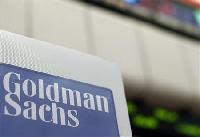
ANAND KALYANARAMAN :B L :20 Feb 2013
Bank portals carry a list of all their charges. Being in the know can help you minimise these.
Banks levy a plethora of charges on their savings bank account customers. Common charges include those for taking demand drafts, for not maintaining minimum balance in the account, and for online fund transfers. But there are many other costs which may catch you unawares.
To be fair, banks disclose what they charge customers for and how much - the Reserve Bank of India mandates them to. Banks have to put this up on their Web sites.
It’s a laundry list which you will be better off reading and knowing about, saving you the surprise of unexpected costs. But in the meanwhile, here’s a heads-up on some of the more unusual bank charges on regular bank accounts.
BANK VISITS
Do you remember the number of times you’ve visited your bank this month? It might be wise to keep tabs on this number. Many banks these days dissuade customers from conducting transactions at branches.
This they do by charging such transactions beyond a specified number based on the customer’s average monthly balance. HDFC Bank, for example, charges Rs 75 per non-cash transaction and Rs 100 per cash transaction at the branches beyond a certain number.
To reduce the number of branch visits by customers, banks have been pushing net banking, direct debits/credits, and widening the scope of transactions you make at the ATM. But note that standing instructions to debit your account carry charges too. You have to pay both for setting up a standing instruction and for each transaction. For instance, SBI charges Rs 51 for setting one up and Rs 25 for processing it. Rejection of a standing instruction can also dent your bank balance.
As far as ATM usage goes, try to restrict access at machines other than those of your issuing bank. The first five transactions each month at other ATMs are usually free but are charged thereafter. ICICI Bank, for instance, charges from the sixth transaction onwards at the rate of Rs 20 for cash withdrawals and Rs 8.5 for non-financial transactions. Say you check your balance and then withdraw cash. Even if you’ve done this in one visit, it will be counted as two transactions.
Many banks also charge for ATM card replacement in case of loss and pin regeneration in case you forget it.
OTHER REQUESTS
Requests beyond the usual monthly or quarterly account statements entail costs. For example, Royal Bank of Scotland (RBS) charges Rs 100 for duplicate and ad-hoc statements. Checking your bank account online may save you this cost. Similarly, many banks charge customers for duplicate pass-books and old records. Also, email/SMS alert services could cost you. RBS charges Rs 25 per month for this service.
If you need your bank to attest your photo or signature, or confirm your address too, be ready to pay. HDFC Bank charges Rs 100 per instance for the former, and Rs 50 for the latter.
RELATED TO ACCOUNTS
Close accounts you don’t use, as banks often levy charges on those which are dormant. For instance, Karnataka Bank charges Rs 50 per year on a dormant account. This may seem like a small amount, but a rupee saved is a rupee earned. The charges you pay can amount to a lot over the years, especially if you have multiple accounts you don’t use often.
Having said that, don’t close your account within months of opening one. ICICI Bank, for example, charges Rs 500 for accounts closed between one month and one year from the date of account opening.
CHEQUE TRANSACTIONS
Cheques returned without being paid - whether deposited or issued by you – will entail a cost. Citibank, for example, charges Rs 350 per instrument if a cheque you issue returns unpaid, and Rs 100 per instrument if a cheque you deposit returns unpaid.
So it is worth the effort to sign consistently, mention correct dates, maintain sufficient balance, and ask persons to whom you give post dated cheques not to deposit them before the due dates. Unfortunately, there is little you can do if a cheque you receive returns unpaid.
Similarly, an instruction to the bank to not pay a cheque after issuing it will cost you. Axis Bank charges Rs 100 per instrument, and Rs 200 for a series of instruments.
Requesting chequebooks beyond the allowed quota also carries charges. ICICI Bank, for instance, issues 30 cheque leaves free every quarter. Every additional cheque book will cost you Rs 30.
If the recent RBI proposal to dissuade bank customers from using cheque books takes shape, then expect to pay more on this front.
Besides the above, many other transactions such as international usage of your debit card, hotlisting and de-hotlisting of a debit card, and return of couriers sent by the bank due to wrong address may add to your cost. Be in the know and try to minimise these charges.
anand.k@thehindu.co.in





